It was in January of last year that I opened my Southern Living magazine and read about a clothing designer making fantastically beautiful garments from recycled t-shirts in rural Alabama. Thus began my (admittedly one-sided) love affair with Natalie Chanin of Alabama Chanin and her work. I must confess that I am a bit obsessed with Natalie these days, scouring the internet for any information I can glean and pictures I can moon over. I follow her blog and Facebook page, own both of her books and have even pre-ordered her third, due out in 2012. Frankly, I just can’t get enough. And this is a little strange for me, given that I usually do not care for, let alone follow, anyone in the cutting-edge fashion world. The clothes are, usually, too inaccessible to me. But not these beauties.
 Photograph by Alabama Chanin
Photograph by Alabama Chanin
Don’t get me wrong: I cannot afford these clothes. But wait! Natalie has given me all of the tools I need to create my own! In her two books, Alabama Stitch and Alabama Studio Style she shares all of the secrets for how she creates her masterpieces. As if that wasn’t enough, she sells all of the supplies that she uses in her own work as well as kits of some of her most popular styles. This sort of behavior is unheard of (even frowned upon) in the world of closely guarded fashion secrets. But, if nothing else, making your own Alabama Chanin-inspired garment will give you new appreciation of the price tags of the originals. For my sewing friends who think that “hand work” is not one, but two four-letter-words, you’d better sit down; every stitch in these elaborate garments is done by hand.


Photographs by Alabama Chanin
I am as fascinated and inspired by Natalie’s story as I am by her work. She has been described as a designer, manufacturer, stylist, filmmaker, mother, artisan, cook and collector of stories . Her first job in the fashion world was in NYC working in the sportswear industry, and she later she spent 10 years in Europe working as a stylist and filmmaker. Upon returning to New York, she tells of getting ready for a party one evening with “nothing to wear”. The t-shirt she cut up and re-sewed launched what was eventually to become her current business. When she found herself in need of skilled hands to sew an order of 200 t-shirts, she turned to the women in her hometown of Florence, Alabama who came from a tradition of hand quilting. From that beginning Natalie, who subscribes to the "slow design" movement, has created an ecologically sustainable business that gives back to the community where she lives, one which has evolved from using recycled t-shirts to sourcing her own American-made, low impact organic cotton fabric.

I’ve recently completed my first garment using Natalie’s techniques with another two underway. I can’t remember a project that felt so good under my hands. The weight of the cloth, the texture of the stitches, in some cases the beading that adorns the piece, all add up to one big tactile love fest. And these clothes feel fantastic on the body.

For this skirt I began with a handful of t-shirts I got from the Salvation Army for $0.99 each. I was lucky to find three light blue and four dark brown shirts that were identical (you can occasionally find a group of identical t-shirts, often from an event, with a graphic on one side). I started with the skirt pattern provided in Alabama Stitch but changed it from four to six gores in order to fit the fabric I had available. The leaf design, a stencil provided in Alabama Stitch, is painted onto the top layer of three of the gores which are then sandwiched with the brown fabric. I hand stitched around each leaf then cut away the top layer, a process known as reverse appliqué. The six gores were stitched together by hand as was the foldover elastic waistband. The hem is left as a raw edge.

I used the remaining fabric I had to create a matching top, brown underlined with blue. This pattern is from Lyla Messenger, The Margarita Tank. I’ve owned this pattern for years but this is the first time I had tried it. I love this pattern for several reasons. It fits me great with little alteration so it was fast and easy to put together with only three pattern pieces. The shaped center front adds a nice visual curve to the body and would be a perfect place for further embellishment. I constructed the top by machine but added some hand stitching to complement the skirt by hand-felling the front seams and stitching the binding down by hand as well.
These two pieces are my favorite wardrobe items at the moment. They are as comfortable as pajamas but a lot more stylish. I am so enamored of the techniques I’ve learned from Natalie’s two books that I have signed up to take a hands-on workshop with her in Alabama in November. In addition, one week from today I am going to meet the fashion icon in person when I attend a lecture she is giving at the Textile Museum in DC. To say I am excited at the prospect would be an understatement. I just hope I can finish my next Chanin-inspired garment in time to wear to the event. I’d better get stitching.
 Thursday, July 25, 2013 at 9:29PM
Thursday, July 25, 2013 at 9:29PM 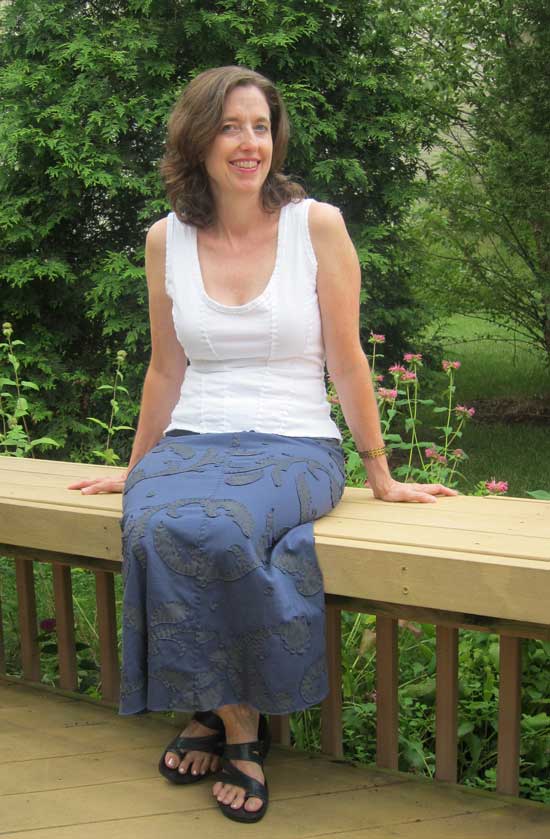
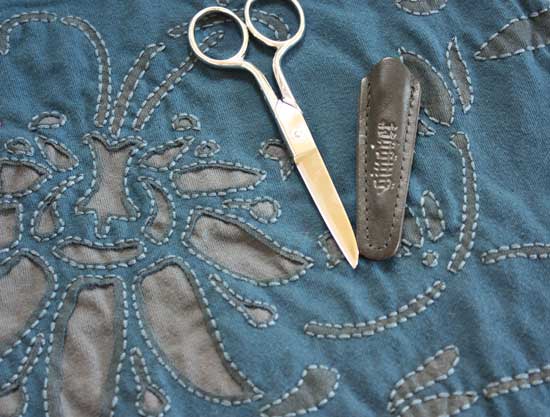

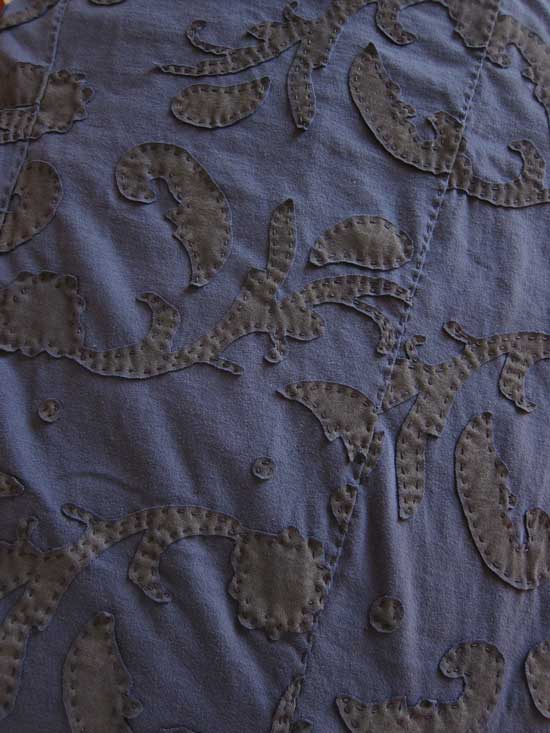
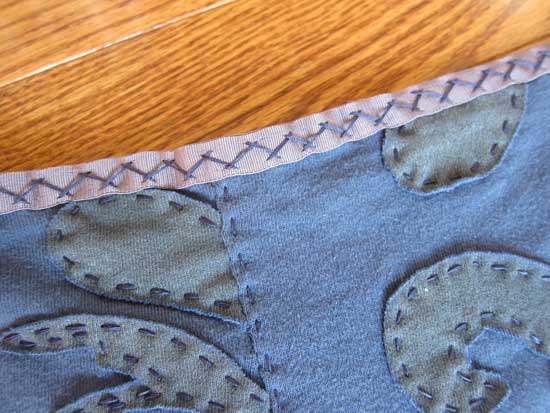
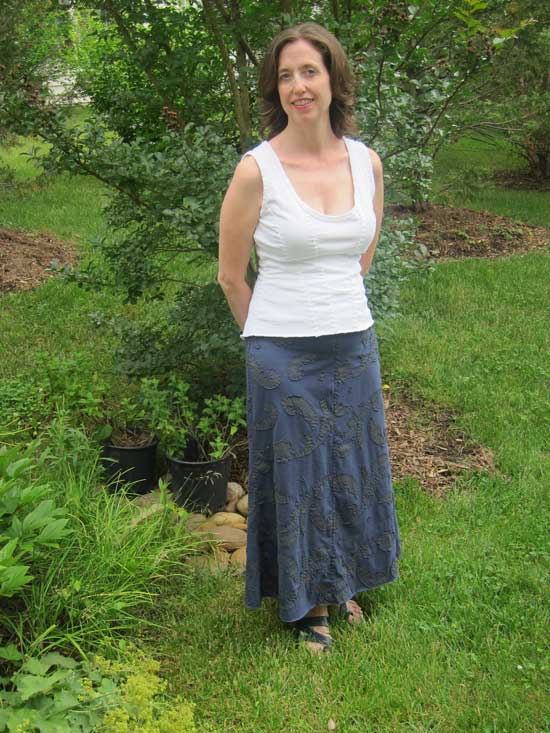
 alabama chanin,
alabama chanin,  reverse applique,
reverse applique,  skirt in
skirt in  Alabama Chanin,
Alabama Chanin,  applique,
applique,  garments,
garments,  sewing
sewing 










